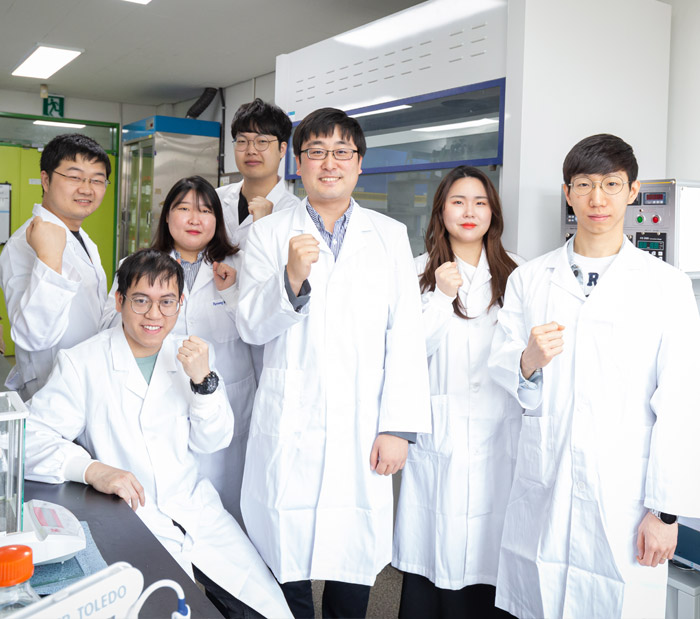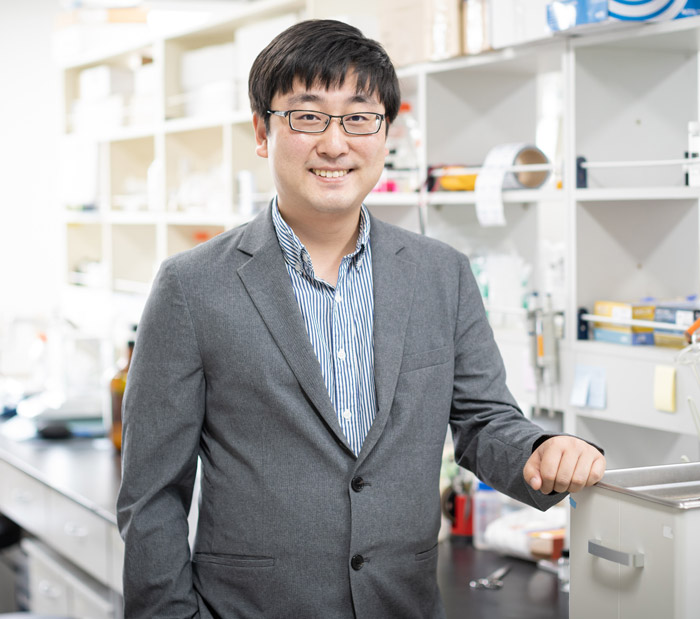Research Stories
Prof. Kim Introduces Highly Efficient Solar-Hydrogen Energy Technology with the Plasmonic Patterned Structure of Au NSS
A research team led by Prof. Jung Kyu Kim (School of Chemical Engineering) reported a research achievement: Using plasmon-induced resonance energy transfer, the team developed a novel nanosphere array providing a strong electromagnetic field with photoelectrochemical cells. This new array can adhere to anywhere like a decal sticker and can increase the efficiency of photoelectrochemical water splitting.
Chemical Engineering
Prof.
KIM, JUNG KYU
Byong Wan Lee(SKKU postgraduate)
Prof. Jung Kyu Kim (School of Chemical Engineering) reported his research achievement: development of a novel transfer-printing of highly ordered Au nanosphere array to enhance light absorptance, charge transport and charge transfer performance of metal oxide films and their application for the photoanode of photoelectrochemical solar water splitting with high efficiency.
N‐type metal oxides such as hematite (α‐Fe2O3) and bismuth vanadate (BiVO4) are promising candidate materials for efficient photoelectrochemical water splitting; however, their short minority carrier diffusion length and restricted carrier lifetime result in undesired rapid charge recombination. Herein, a 2D arranged globular Au nanosphere (NS) monolayer array with a highly ordered hexagonal hole pattern (hereafter, Au array) is introduced onto the surface of photoanodes comprised of metal oxide films via a facile drying and transfer‐printing process. Through plasmon‐induced resonance energy transfer, the Au array provides a strong electromagnetic field in the near‐surface area of the metal oxide film. The near‐field coupling interaction and amplification of the electromagnetic field suppress the charge recombination with long‐lived photogenerated holes and simultaneously enhance the light harvesting and charge transfer efficiencies. Consequently, an over 3.3‐fold higher photocurrent density at 1.23 V versus reversible hydrogen electrode (RHE) is achieved for the Au array/α‐Fe2O3. Furthermore, the high versatility of this transfer printing of Au arrays is demonstrated by introducing it on the molybdenum‐doped BiVO4 film, resulting in 1.5‐fold higher photocurrent density at 1.23 V versus RHE. The tailored metal film design can provide a potential strategy for the versatile application in various light‐mediated energy conversion and optoelectronic devices.
This research outcome was published on 24th, April, 2020 in ‘Advanced Energy Materials’ (IF: 24.88), a world-renowned scientific journal.
*Original Article: Retarded Charge–Carrier Recombination in Photoelectrochemical Cells from Plasmon‐Induced Resonance Energy Transfer, Advanced Energy Materials, https://onlinelibrary.wiley.com/doi/full/10.1002/aenm.202000570
*The researchers : Byoung Wan Lee (First Author, SKKU postgraduate), Jung Kyu Kim (Corresponding Author, Professor, School of Chemical Engineering)


